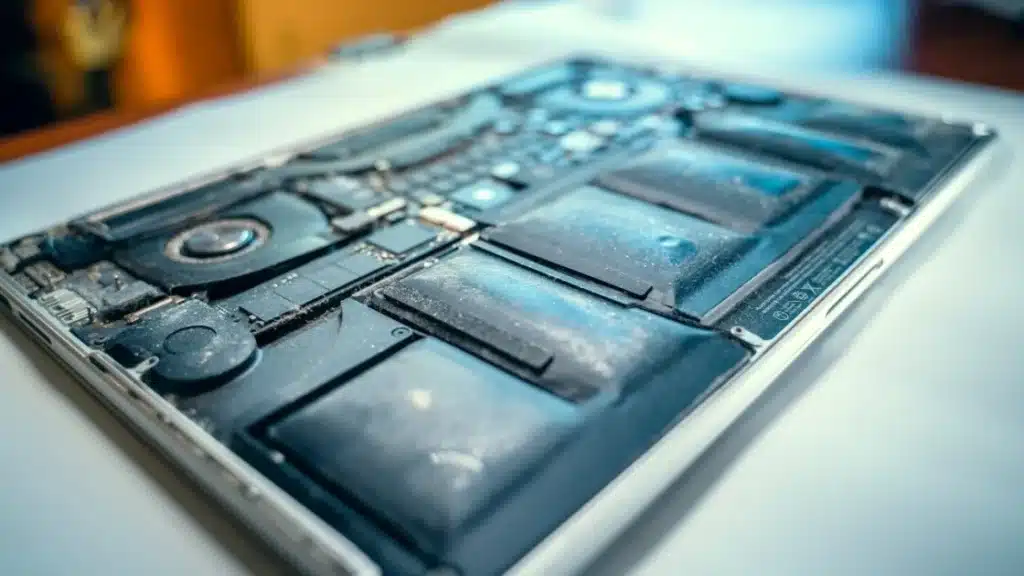The benefits of lithium batteries are self-evident. They can bring a lot of convenience to our lives. But you have also heard reports of lithium battery fires and explosions, which is inevitably worrying. This article explores why they explode and how to prevent this risk to the greatest extent possible.
Table of Contents
ToggleWhy do lithium batteries explode

The direct fuse of lithium battery explosion is thermal runaway, which is usually caused by abnormal local heating, which in turn triggers more violent chemical reactions in the surrounding areas, generating more heat. Eventually, the battery shell cannot withstand it and may rupture, spray electrolyte, smoke, catch fire, or even explode in a sealed environment. The following are common causes of explosion.
Internal short circuit. If there are defects in manufacturing, the diaphragm is of poor quality, or tiny metal impurities are mixed in, it may cause hidden dangers. Or in long-term use, some needle-like metal crystals may grow inside the battery, which may pierce the diaphragm, causing the positive and negative electrodes to directly touch each other, instantly generating huge current and heat.
External short circuit. External metal, such as a key, touches both ends of the lithium battery at the same time. It is also possible that the device has been flooded, and water is conductive, which can also cause a short circuit.
Overcharge. If you use a poor quality charger, or the device’s own charging management circuit (BMS) fails, the charger keeps charging and you don’t know when to stop. It is also possible that the charging voltage is too large, causing the internal chemicals to become very unstable, generating a lot of heat and gas.
Over discharge. Also known as power loss, although this may not cause the battery to explode immediately, it will seriously damage the internal structure of the battery. Frequent over discharge of lithium batteries will increase the risk of subsequent charging.
Physical damage. The device is punctured, squeezed, etc., which can damage the delicate structure inside the battery and cause an internal short circuit.
High temperature environment. When the equipment is working in a hot summer environment, the lithium battery cannot dissipate heat in time, which can also cause thermal runaway.
Poor quality batteries and design defects. Especially poor quality lithium batteries, such batteries are likely to be of poor quality or lack protective boards. The probability of such risks is high.
At this point, you may know the importance of BMS, which can monitor the battery’s current, voltage, and temperature changes, acting as a bodyguard. Once it detects dangerous signs such as overcharging, over-discharging, excessive current, and high temperature, it will try to cut off the circuit to protect the battery and equipment.
Identify the distress signals of lithium batteries

If your device or battery has these problems, you need to be particularly vigilant and deal with them in a timely manner. Never take it lightly.
Bulging and deformation. This is the most common and most intuitive danger signal. If the back cover of your device is bulging or bulging, it is likely that the lithium battery inside has bulged.
Abnormal heating. It is normal for the device to heat up when it is working or charging. However, if the device is abnormally hot when it is not charging or rarely used, it means that there may be a problem inside the battery.
A distinctive chemical odor may be sweet or pungent, and requires further inspection.
You can see liquid seeping out of the battery or device directly. This liquid may be electrolyte, which is corrosive and not good for your skin or the device.
Performance drops suddenly. Your phone, which previously lasted all day, now runs out of power in half a day, or suddenly shuts down. These are all signs that the battery is failing, the internals may have been damaged, and the stability has decreased.
Physical damage: If the battery or device casing has obvious dents, cracks, or marks from being punctured by sharp objects, the battery cells inside are likely damaged.
Frequent device restarts or shutdowns. If it still has plenty of power, but the device frequently restarts or shuts down automatically for no apparent reason, in addition to a system software issue, there could be something wrong with the battery.
Golden rules for safe use of lithium batteries
Here are some ways to reduce these risks at the source, so you can take preventive measures before they occur.
Buy products from regular brands with safety certifications. Check whether your device has UL, CE, or UN38.3 logos. Stay away from products without UL, CE, or UN38.3 logos, as they are likely to be made with inferior materials and have poor quality.
Use the original charger. Different devices may have different requirements for charging current and voltage. Misusing an incompatible charger may damage the battery life at best, or even lead to overcharging and danger.
Try to avoid charging overnight. Today’s BMS can automatically cut off the power, but if it fails, do not connect the charger for a long time to reduce unnecessary risks.
Do not charge in extreme temperature environments, such as when it is extremely cold outside in winter or when it is scorching hot in the summer. Charging at this time is not good for battery life and safety.
Avoid physical damage, such as falling from heights, severe impacts, being squeezed and punctured by heavy objects.
Never disassemble or modify the battery without permission. Lithium batteries need to be inspected by professionals.
When storing lithium batteries, keep the voltage at around 50% as much as possible and store them in a cool and dry environment.
If the lithium battery or device has the above-mentioned adverse phenomena, you should replace it with a new battery in time and contact the official after-sales team for processing.
Emergency response and self-help guide

If you find that the battery or device starts to smoke, catch fire, or has signs of explosion, do not hesitate to move away from it immediately. After evacuating to a safe place, call the fire department immediately and provide accurate information such as the fire address, whether there are casualties, and the fire situation.
If the fire is very small, such as just starting to smoke or small flames, you need to immediately cut off the power, use a Class D or ABC fire extinguisher, or cover it with sand.
If lithium batteries emit toxic and harmful fumes when burning, try to open windows for ventilation. Lithium batteries are prone to reignition, and even if the open flame appears to be extinguished, the internal reaction may continue and may catch fire again after a while, so you must remain vigilant.
Those burned-out batteries or devices are hazardous waste and cannot be thrown away like ordinary garbage. Contact a professional lithium battery recycling agency to learn the correct treatment methods and conduct special recycling.
Conclusion
The probability of lithium battery explosion is very low and can be prevented in most cases. As long as you follow the safety regulations and purchase regular products, we also welcome you to consult us to obtain more lithium battery safety knowledge.
